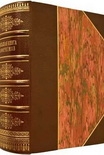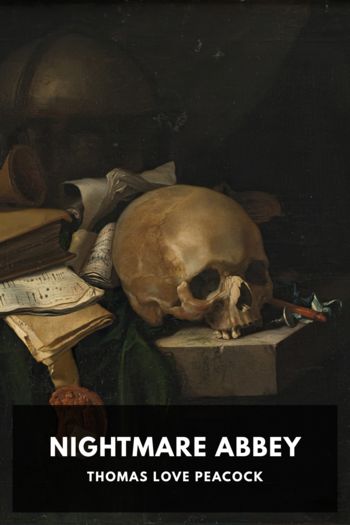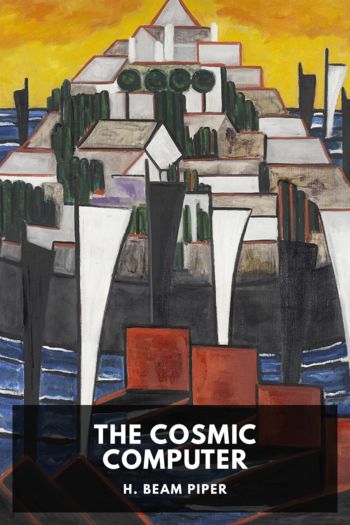Gluck, Diana Souhami [good novels to read in english txt] 📗

- Author: Diana Souhami
Book online «Gluck, Diana Souhami [good novels to read in english txt] 📗». Author Diana Souhami
I write to implore you to ensure that this matter goes no further. I’m asking you to say nothing to anybody and to take whatever measures are necessary to ensure that all those at Roquebrune who have some knowledge of these facts, either on account of their office, like M. Reynaut, or through rumour, preserve absolute silence. All it would take would be an excessively curious tourist for the Press to batten on to this with avidity and we must at all costs avoid the scandal that would arise from such a revelation and the pain it would cause those close to Yeats and to his other friends. If by some chance, which I cannot foresee, a member of Yeats’s family were to come to Roquebrune to visit the poet’s tomb, it would be necessary to behave with the greatest prudence and to employ as much diplomacy as possible and the greatest delicacy – of which I’m sure you’re capable – to check their identity. As for sightseers or journalists, you could claim that your duties do not permit you to accompany them to show where the grave is buried.
The Abbé gave every assurance of discretion. He had, since 1942, received only one letter of enquiry about a Mr Yeats. As no one could give him any information he assumed the letter was intended for another Roquebrune, in Var, and did not answer it. With the Abbe’s cooperation in cutting through French red tape, Dulac and Edith drew up detailed plans to avert questions and scandal and to repair the damage. They arranged for a temporary stone to be fixed on the Roquebrune cemetery wall saying that W. B. Yeats was buried there – without of course specifying ‘though not for long’. They took out a concession ‘in perpetuity’, for about 5000 francs, for the erection in the cemetery of a permanent headstone which Dulac designed and a Sussex sculptor, Joseph Cribb, immediately began to carve. The Abbe chose a site for it right against the ossuary – ‘in my opinion it’s the natural site for the poet’s monument’, he wrote to Dulac (12 August 1947).
Dulac and Edith discussed the matter of Yeats’s reinterment in Ireland but agreed that no self-respecting Irish parson would bury a box without being certain that it contained the remains over which he performed the sacred rites, and that the Roquebrune sexton might palm them off with any old bones.6 They gave no word of their manoeuvres to George Yeats. ‘I entirely agree’, wrote Dulac to Edith (17 July 1947), ‘that it is infinitely better if she can be kept out of it and only told when everything is done. Even then she should be told what I proposed to tell everybody else: “That a more lasting monument to W.B.’s memory was erected by us etc etc …”.’
Their plans were nearly complete when, on 6 January 1948, Dulac saw an article in The Times announcing that George Yeats intended bringing her husband’s remains back to Ireland for reburial at Drumcliff. ‘… It is very painful for me to have to write to you of this matter’, wrote Dulac to her that same day, ‘and I wish I could spare you the pain of it also, but that is now impossible.’ He then outlined the whole sorry saga of Edith and Gluck’s sojourn to Roquebrune, the ‘fosse commune’, the heaping of Yeats’s bones into the ossuary, the attempts at reparation of the blunder.
I don’t know what you propose to do in the circumstances, but if you will allow me to make a suggestion, I think you might say to the Corporation that it is not possible in present conditions to make the transfer and leave it at that. But if you were obliged to give details, I should say that it was owing to the war that, the Cemetery at Roquebrune having been seriously disturbed, W.B’s remains had been dispersed. A monument could, however, always be erected in Drumcliffe and my stone could be sent there instead of to the South of France.
Again I hope you will think that we have acted as we should in the interests of all concerned and especially in that of our friend.
Dulac sent a copy of the letter to Edith with a covering note:
… If she now spreads the news about, she will undoubtedly cut a very poor figure as we have definite proof that she could have done something during all these years; the grave was not touched for eighteen months from the Liberation and she had nearly 10 years in which to extend the concession. Eire was neutral all that time. And if there is a scandal … well! she will, as I said be in a very bad position and I think she has enough wits left not to do anything to bring it about. And remember, the Abbe has been told not to tell anybody except members of the family. However there is no use worrying until we hear from her.
George Yeats’s response was blunt. The grave was for ten years not one. She had the receipts. There was no question of a ‘fosse commune’. She had contacted the French minister in Ireland who said it would be quite easy to get the remains and bring them back.7
A police inspector was sent from Paris to Roquebrune and Biancheri went through his investigations again, and wrote again to Dulac (16 February 1948):
According to the register of burials in the Roquebrune Town Hall the poet Butler William Yeats [sic] was buried on 28 January 1939 in a communal grave.… The grave was granted for five years, after which the bones were put in the ossuary. The register of funerals at Menton says the same as that at Roquebrune.
Could there be a copying error or a possible confusion between a five and ten year grant? Examination of the document Mrs Yeats has, would provide a beginning to the solution to this problem. One fact is certain: the





Comments (0)